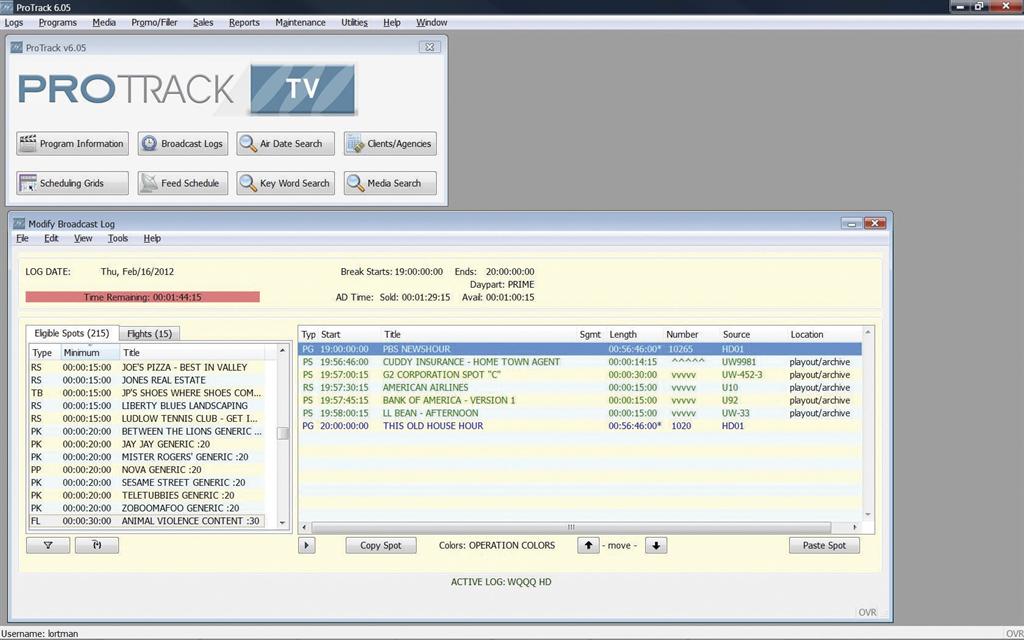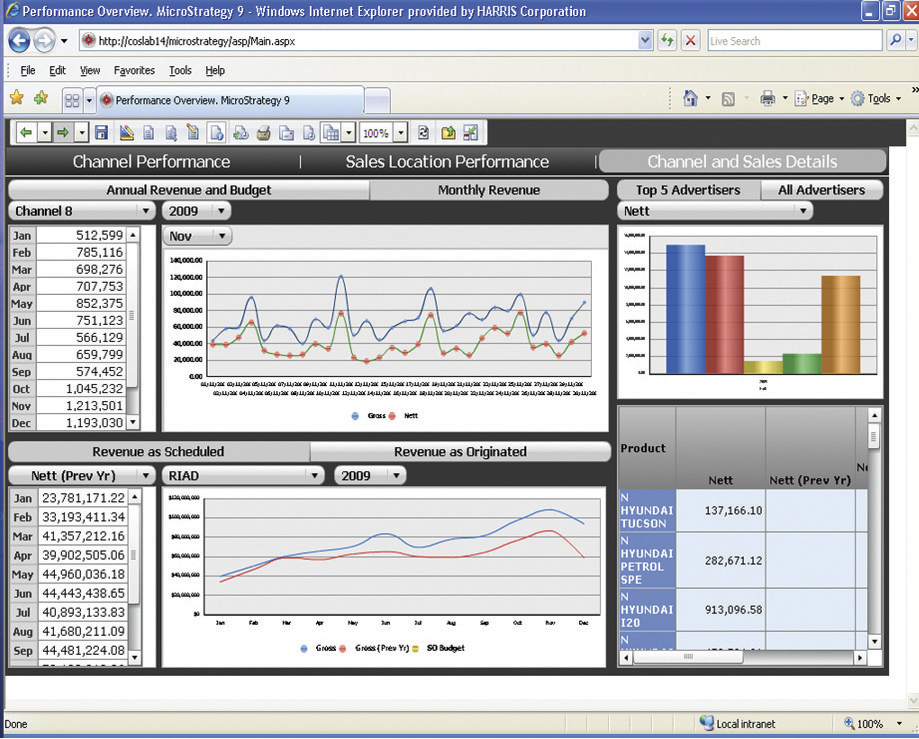From Covering Traffic to Driving It

Myers ProTrack TV drives workflows and enhances organizational transparency across key departments within the broadcast facility.
SAN FRANCISCO—If there’s any doubt we are in an evolved marketplace, just take a look at what used to be the straightforward world of traffic and billing. Starting from simple means, whereby a station would use traffic and billing software for just that— managing the bustling media requests and invoices that served as the two major in and out points for a station—today’s traffic and billing technologies have been asked to do more as the world around it has evolved.
It’s being thrown a number of curveballs; from taking to the cloud to handling multichannel operations to dealing with nonlinear content distribution, but the basic task remains relatively simple: Make media turn a smarter profit.
DATA CRUNCHING
One of the newest, biggest demands: How to help media companies better understand the massive amounts of metadata that reside within the traffic and billing frame—otherwise known as “big data”— and telling media companies how best to use it.
“Big data is radically transforming our media experience today,” said Hervé Obed, founder and CEO of ProConsultant Informatique, a French-based provider of broadcast management software, with offices in Atlanta. “There is a profound mutation of the consumer experience due to the multiplication of screens and the explosion of nonlinear programming and social networks. What really matters is how all of those elements come together and how they complement each other… and big data applications [that can] crunch them in order to predict things like behavioral patterns, personal interests and so on. Those predictions can help generate revenue.”
To tap that value, customers are asking for integrated environments where productivity and automation can be maximized. Solutions like SocialSeine, a module within ProConsultant’s Louise business management solution, analyzes social audience impact.

Harris Broadcast Net Gain business analytics software can be scaled to handle big data applications. “As the broadcast space has gotten more competitive, sales folks are in more demand to have more insightful information,” said Crist Myers, CEO and president of Myers, a Northampton, Mass.-based provider of broadcast traffic, business and content management software. “If you have a traffic and billing system that stores all of your metadata, you can do some really creative parings if you know ratings and demographics. You can use that information to help sales people make creative decisions.
“We are very much in the data- crunching business,” he added, “putting together these big data schematics in the form of dashboards to provide quick access to clients.”
The professional video industry's #1 source for news, trends and product and tech information. Sign up below.
The increasing use of big data allows stations to improve decision making and target advertising more precisely, according to Scott Criley, business development director at Harris Broadcast. Harris Broadcast’s solution includes Net Gain software, a business analytics solution that can be scaled to handle big data applications. The system mines data and offers analysis that can be used by sales, programming and finance.
“It allows us to bring data sets into multiple sources to aggregate that data in,” Criley said. “We can compare that, try to find opportunities to increase CPMs [cost per thousand views] or ad sales to better target advertising.”
BRINGING DOWN THE FENCE
Traffic and billing software is also at the forefront of another as-yet-unresolved dilemma: how to break down the fence between the worlds of broadcast and mobile/ Web. Many broadcasters and MSOs still view broadcast as their primary focus, with tinkerings in mobile and Web video as valuable, but secondary, side projects.
The ultimate goal is to be able to manage all your visual content simultaneously from all platforms, and then mange all that revenue and bill their customers in one general place.
“Initially what we’ve seen is that [these two areas] have been separate, but as the digital side grows [those financials] are starting to come back into the core, and customers need to manage them in a centralized way and build that into their entire ecosystem,” said John Patrick, managing director of media products at Harris Broadcast. “The industry is beginning to move in that way.”
The biggest driver for change is undoubtedly the ever increasing number of platforms and devices that broadcasters are managing, according to Geoff Hutton, chief functional architect for U.K.-based Pilat Media, as well as the impact of delivery of television via IP.
“Pilat Media’s perspective on traffic and billing has always been that it is part of an overall broadcast solution and for most of our clients, it is already managed as part of a full broadcast management solution within the Integrated Broadcast Management System,” Hutton said. “With broadcasting in general, there is a constant demand for better operational efficiency in order to manage an ever increasing number of platforms and services with the same or less staff.”
Not surprisingly, companies are also offering mobile options of their solutions, such as the ProWeb Mobile solution from Myers that provides scheduled and program metadata to a client’s Web site. WideOrbit recently introduced a new tool known as WO View, a downloadable mobile tablet app that provides mobile access to the company’s WO Traffic solution. A new feature within WO Traffic allows customers to order, report and bill for both broadcast airtime and Internet ads within WO Traffic.
“Bringing data up through a mobile way allows a customer to see multiple reports in a dashboard to access data better, quicker and easier,” said Geoff Blumenthal, product manager at WideOrbit in Agawam, Mass. “It offers you insight into resources and performance to see things in new ways.”
Cloud technologies are also proving to be a boon to the traffic and billing space.
“What’s driving the need [for cloud technologies] is the need for sales execs to be able to have a Web-based solution when they’re placing orders and providing proposals,” Patrick said. “What excites us about the virtualization of those hardware backend functions is taking advantage of those virtualized cycles and visions, where you can have multiple databases and solutions on one server so you don’t need a single physical server.”
Like other areas of the broadcast chain, the cloud offers traffic and billing the benefit of less-expensive IT-focused operations and the technical improvements that come from ad optimizations, scenario planning and storing, Criley said. “You can do things in a cloud environment that wouldn’t be efficient in a dedicated IT environment.”
The goal now is to figure out a way to use all of this data in a smart, economically minded manner. “People are realizing that there is value to that [data] and that they can use that to improve their close rate,” Myers said. “It’s an incredible valuable to have a system that has insight to every department within the broadcast chain.”
Susan Ashworth is the former editor of TV Technology. In addition to her work covering the broadcast television industry, she has served as editor of two housing finance magazines and written about topics as varied as education, radio, chess, music and sports. Outside of her life as a writer, she recently served as president of a local nonprofit organization supporting girls in baseball.

